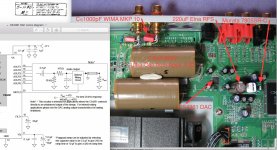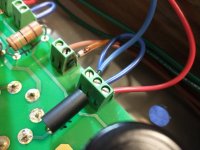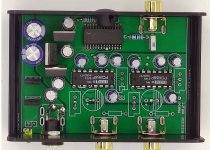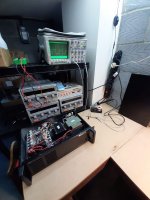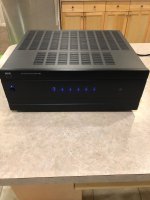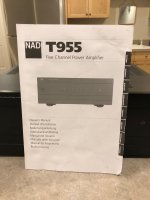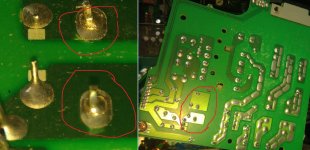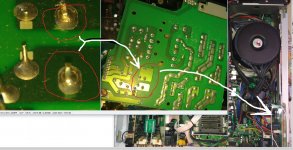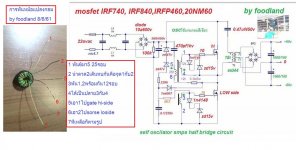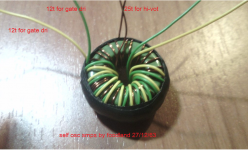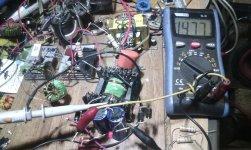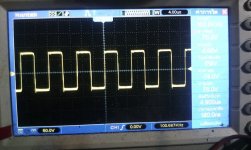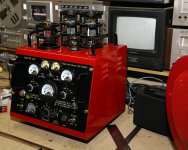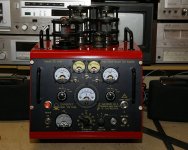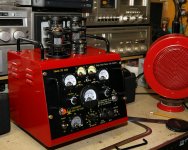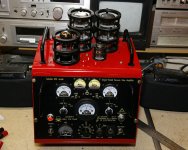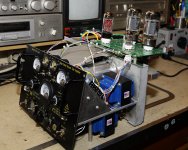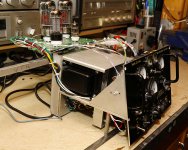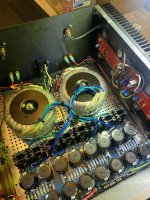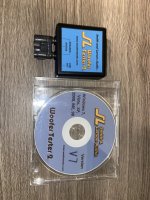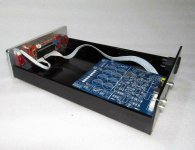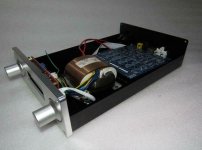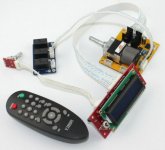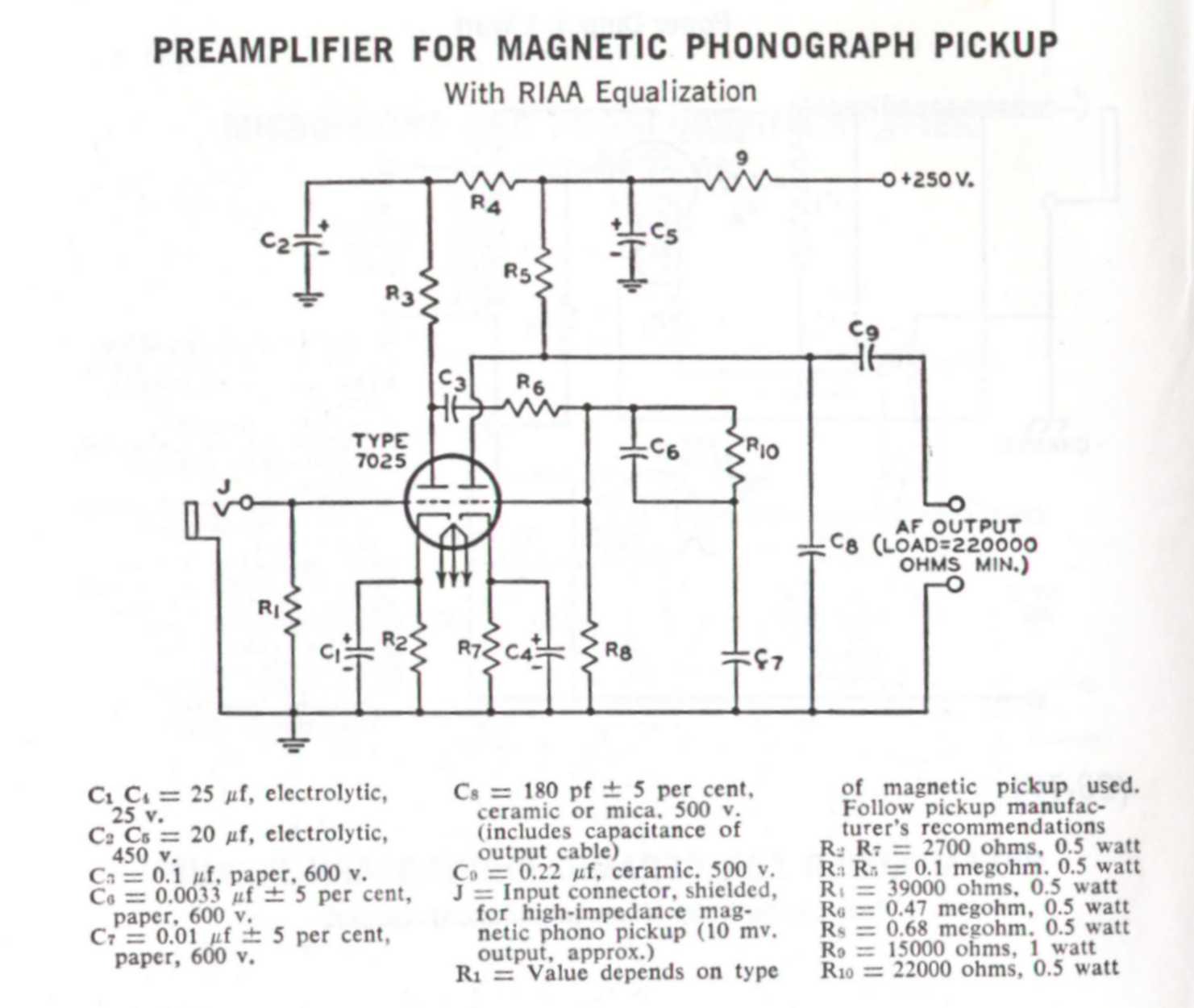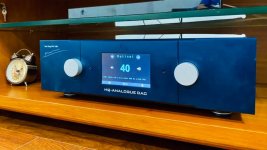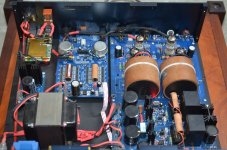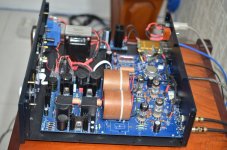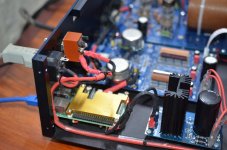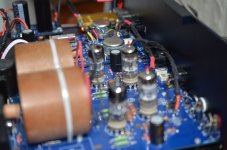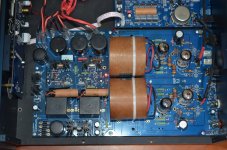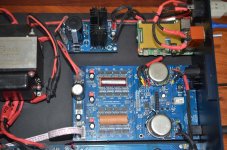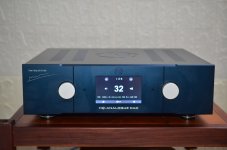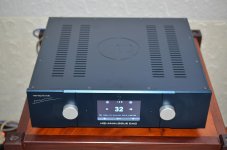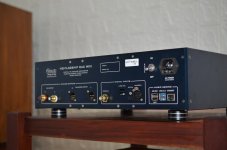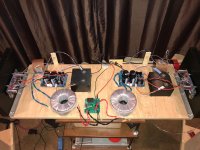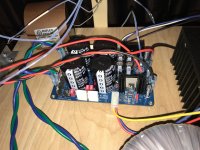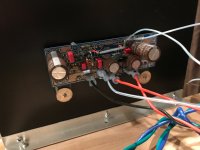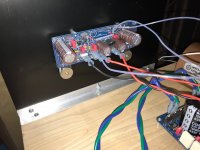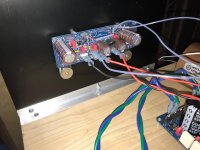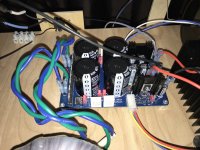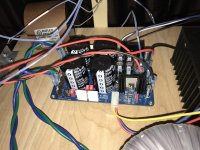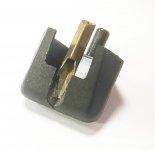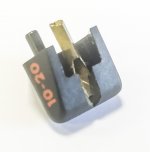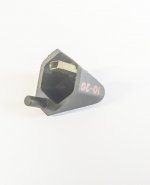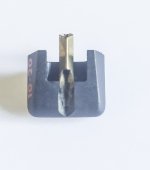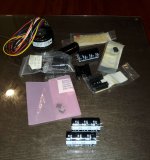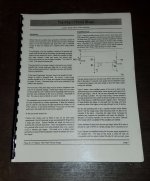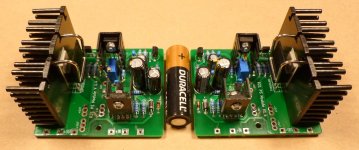It is an amplifier in class D type digital self oscillating feedback with feedback before the coil.
Input sensitivity 200mV, gain 150, feedback Integrated Loudness, the amplitude of the triangle 6Vpp, the switching frequency of 360kHz.
The output coil are wired in anti-phase to minimize EMI and are ferrite cores EI 40, air gap 3 mm, and has 14 turns.
Bridged amplifier is powered by a switch mode power supply 138V / 23A. IRF644 mosfets are always three parallel, contains current protection. Amp I used for the construction of system LRAD (Long Range Acoustic Device) and supplies the piezoceramic 1000W / 16kHz
https://www.lradx.com/
It hysteretic power oscillator and oscillates on the basis of the delay quality triangular wave is better than an oscillator which oscillates on the basis of the phase-shift (feedback per coil)
Also the quality of the triangular wave in this type of oscillator controlled better than D amplifiers.
Transistor BF423 converts the output of the comparator between levels of supply + -15V to -70V on Wednesday because logic 4030 is powered by a plus 5V to -70V and IR2110 plus of minus 12V to 70V.
The potential difference is 85V, because the converter BF423 between levels at the input gate 4030 to 5V.
The quality of a triangular wave, which in this case, the amplitude depends 6V audio amplifier and its size does not affect the volume, as in controlled D amplifiers.
The result is that amplifier idle effervescence nor gain at 150 or even 1000. (gain in almost open loop is 12000, where it is still stable. Then it vibrated wave 10Hz)
The first OA that has the input lowpass filter, because if you have unshielded wires and has an entrance next to the exit, overwhelm, the support and influence of positive feedback grows multiple volume.
The second OA inverting integrator which is coupled with the inverting comparator included feedback.
The third is the integrator of the second half bridge and the audio signal is non-inverting, the output is then the voltage in the opposite phase, the speaker is connected between the outputs of the bridge, which is twice the voltage and approximately four times the performance.
Gate 4030 forms a deadtime generator 70ns and resistors 100 ohm to the diode before MOSFETs formed Ug, resistance delayed and diode serves to fast discharge gate, so that at 400kHz was not against each other and avoid shocks, needle overshoots that may damage the transistors and also burden the crossflow end degree and reduce efficiency.
Start oscillator takes place in hysteresis mode. The comparator due to its own large amplification opens (at that time has both inputs zero voltage) BF423 closes lower mosfets are opened and the comparator waits until the charge pump, it takes more cycles. Output becomes 430kHz harmonics, which increase tension and to the feedback reach the flipping of the comparator back deploys oscillations.
When switching into the outlet or power outages, or transition from Standby, or to shorten it does not wound to the speaker because the PNP transistor BF423 is from around oscillator fastest to open the first and thereby prevents the charge pump until the voltage source again stabilizes.
It is very convenient for the construction of the amplifier in class TD in the function of the power source and the active filter D carrier for amplifiers in class AB, B or just
Fitting into AB amplifiers including SMPS power they have the power to 140V. The exercise of the amplifier is compared to the original about fourfold, limited only current through the BJT, which is set at D.
The AB is not performed interventions, but it is advisable to disconnect the Strangler in bases exciters terminal transistors, which originally served as protection against short-circuit and if this involvement makes possible, eliminate, or reduce the emitter resistors just to remain feedback for controlling the quiescent current, because they consume power and the load impedance can be halved. It's also good if AB is a provision in the current amplification in order to not spoil the effectiveness and symmetrically limited.
To D feedback resistors fitted with the same as in the original AB to make it go together. In the preamplifier output to connect -IN OA to have gain first
The output of D two fast rectifier diodes and through the choke to supply AB. If AB has on board some great Elyte so disconnected. To cover current consumption and cross some AB 50 mA to 150 mA at a time when it is idle D just above and below the filtration 1u / 400V.
The first harmonic 360kHz whatever is necessary to 5V is not a problem, AB transistors for it permanently nonconducting, and if there are other things hang together, preamplifiers, indicators, and also supply channeling D carrier.
If AB had previously difficulty maintaining quiescent current depending on the temperature, so he injected into feedback pure first harmonic 360kHz few mV and feedback control the bias current from the deck.
The switching frequency can then be reduced from 360kHz half to a third of the integration Article 10k of about 200p in feedback, performance by even a few hundred watts to grow.
Benefits AB class are retained, D deficiencies and suppressed class as a
whole, it does not heat up.
.
